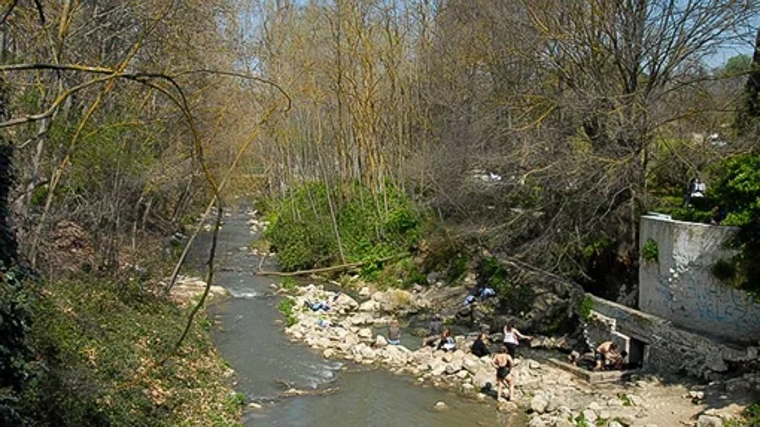The perfect place to relax half an hour from Granada: Roman hot springs overlooking the river

Within the province of Granada, there are several well-deservedly famous spas: Lanjarón, Zújar, and Alicún de las Torres offer extraordinary services and are very popular. This is also probably the oldest of all, located in a truly beautiful town: Alhama de Granada .
Because the history of Alhama's spas dates back to Roman times, as evidenced by several remains found in the area. Pliny the Elder , for example, visited these baths, and the town was already of great strategic importance and was well-traveled; works such as the Roman bridge and the road are testament to this.
The Muslims arrived in Alhama in the 9th century and gave it the name that the town still bears. Al-Hammam means "baths," a fairly obvious reference to the spring, which was a place of recreation for those who lived there at the time.
Alhama became a Christian city in 1482, when it surrendered its fortress, the remains of which still exist and from which one can enjoy impressive views of the cliffs surrounding the town. It was one of the key battles in the conquest of the Kingdom of Granada and ended, as is known, ten years later with the surrender of the Alhambra.
It is known that the Christians destroyed many vestiges of the preceding era, but the spa was preserved. Hence, what is known as the Old Bath, dating from the 13th century and easily recognizable by its horseshoe arches, remains.
Another room was added, which is consequently called the new bath. This took advantage of a rather sad circumstance: the earthquake that struck the area in 1884, which killed some 800 people in Alhama and nearby towns like Arenas del Rey . The quake severely damaged the facilities and affected the groundwater, necessitating significant modifications.
Thus emerged the modern spa of Alhama, around which the hotel was built in the 20th century, where hundreds of guests come to enjoy its numerous services, especially therapeutic treatments that, contrary to what one might think, are not only used by older people. The thermal waters are a magnificent remedy for stress, and many young people also suffer from this.
The place is perfect for relaxing. It's located in a privileged setting, in close contact with nature, and the silence is savoured there. Furthermore, noise is prohibited at the spa hotel after hours, and siesta time is sacred. Between 4 and 6 p.m., there's almost no activity there.
 Outside the spa is the Alhama River and in that area there is hot water that visitors take advantage of.
abc
Outside the spa is the Alhama River and in that area there is hot water that visitors take advantage of.
abc
You can enjoy the hot springs as a guest, but also as an outsider. The Alhama River runs outside the spa, and in that stretch, there are also natural—well, not exactly natural—hot water pools that many travelers don't hesitate to use. It's a highly recommended spot for a relaxing day, although obviously, in the middle of August and with temperatures of almost 40 degrees, swimming there might not be the most pleasant experience in the world.
As already mentioned, the spa is a perfect place to relax and do absolutely nothing else all day. But if you're looking for some action, especially to see a pretty town, Alhama de Granada is just a stone's throw away. Three kilometers , to be more precise. So a walk might be a good idea, as the road isn't usually very busy.
Once you arrive, you absolutely must take in the cliffs, an impressive canyon over the Alhama River that time has shaped to its liking. Numerous trails lead from there, and you can even climb the (relatively) nearby peak of La Maroma, at 2,065 meters above sea level, from where you can see the African coast on clear days.
The rest of the town, with its typical layout of narrow and often steep streets, is well worth a visit. There are beautiful corners that invite you to get lost, and monuments like the Church of the Encarnación, built by Isabella the Catholic in the early 16th century, that can and should be seen. Then, let everyone decide what is essential and what is complementary: the spa or the town. Although everything will most likely be included in the must-see list.
ABC.es





